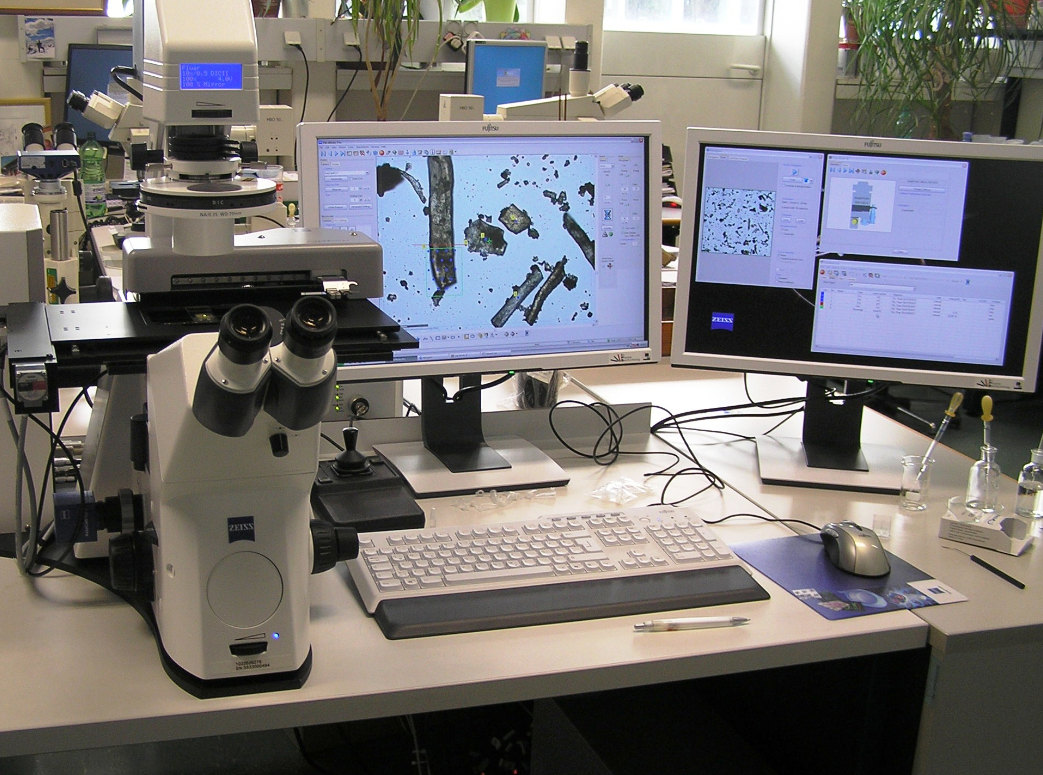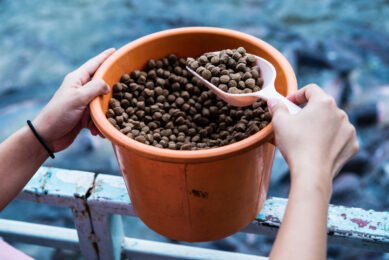Analytical methods to test for ruminant PAPs

Processed animal proteins (PAPs) from non-ruminants are allowed for fish. But good analysis techniques are ?needed, to know which PAP fragments are present. Also for the future, when these ?ingredients could be ?re-introduced for other animal species as well.
It is considered that the transmission risk of BSE from non-ruminant to non-ruminant is very unlikely. Therefore, since June 2013, processed animal proteins (PAPs) from non-ruminants have been allowed to be added to fish feed. However, to ensure that the PAP originates exclusively from non-ruminants the feed has to be tested with ruminant PCR according to the current legislation situation (Commission Regulation (EC) No 51/2013). But the new official control method is reason for criticism because the number of “low level” positive ruminant results in aquafeed rose1 and until now, legal feed materials of animal origin being the reason behind these results, cannot be excluded. Moreover, a lifting of the ban on the use of PAP from non-ruminants in non-ruminant feed without lifting the existing prohibition of intra-species recycling is considered (European Commission 2010). Accordingly, pig meal could be fed to poultry and poultry meal to pigs. This would mean that feed samples also have to be tested with pig or poultry PCR in addition to ruminant PCR to comply with the intra-species feed ban.
Combination of techniques
To guarantee, that fish feed, which contains non-ruminant PAPs, is free of ruminant PAPs, it has to be analysed with a ruminant PCR assay to comply with the total ban of feeding PAPs from ruminants. The possible easing of the rules for pig and poultry feed justifies an even greater demand to solve the analytical problem with legal feed materials of animal origin. The situation will become more complex solely due to the fact that blood products from non-ruminants can lead to positives results. For example: a feeding stuff for pigs contains poultry PAPs, milk powder and blood meal simultaneously. If poultry PAP is mentioned in the composition or terrestrial particles were detected by microscopy, the feed has to be analysed with pig and ruminant PCR assays. Hence, because of the presence of blood and milk the analysis will lead to positive results with both PCR assays. So there is great need to have a good analytical system that minimises the risks to obtain positive ruminant PCR signals. A team of Austrian scientists developed a system, which allows examination of individual particles of a feeding stuff. This method is a combination of microscopy, microdissection and real-time PCR (Figure 1).
First, microscopy preparations are made from the sediment of a feed. After identification of animal fragments of terrestrial origin with the microscope, they will be isolated from the slide by the microdissection with the help of a laser. Thereafter, DNA is extracted from the particles and then analysed by PCR.

To guarantee, that fish feed, which contains non-ruminant PAPs, is free of ruminant PAPs, it has to be analysed with a ruminant PCR assay.
No false positives in feed
In the course of our preliminary investigations, the researchers demonstrated that they were able to determine the corresponding species to particles isolated from ruminant, pig and poultry PAP reference material. Bone fragments gave better results than muscle fibre fragments. An explanation might be that due to the high temperatures during the manufacturing process of PAPs DNA from muscle fibres is more degraded than that from bones. However, sporadic there were some failures in the tests. The reason for that remains unclear. But this could be the result of an increased risk of losing particles or DNA during the extraction process because we worked with microscopic small particles. The analysis for feeding stuffs, which should meet the intra-species feed ban and/or the total ban of feeding ruminants, has to be based on zero tolerance. Theoretically, only one positive PCR result from an isolated fragment out of a feed sample has to be sufficient to reject the feed. In practice, the result must be reproducible. Therefore, it is necessary to isolate and investigate several tubes containing particles from one feed sample. In further experiments bone particles from feed mixtures containing simultaneously PAPs (from pig or poultry) and calf milk were isolated. It was shown that most of the separated fragments could be assigned to their respective animal species (pig or poultry) without obtaining positive ruminant results due to the milk. During the investigation, the researchers got single random failures on level of particle analysis. Nevertheless, in the worst result on feed level at least eight positive PCR signals out of 15 investigated particle samples were received. This number should be more than enough to make a definitive statement. So, on level of feed sample analysis there were no false results. Calf milk supplement in the feed did not lead to “false positive” ruminant PCR results.
Rules for PAPs
Processed animal protein (PAPs) is derived from animals that were fit for human consumption at the point of slaughter and cannot be fed back to the animals from which it was derived. It is different from meat and bone meal, as this is an animal protein but it is made from material that is not fit for human consumption at the point of slaughter and cannot be used as a feed ingredient in any circumstances. The production of PAPs themselves is subject to the requirements set out in the EU animal by-products legislation (Regulation 1069/2009, Regulation 142/2011 and Regulation 749/2011). In particular PAPs must only be derived from so-called ‘Category 3’ animal by-products (e.g. undiseased carcasses and parts of slaughtered animals, including hides, skins, horns and feet), undergo pressure sterilisation and be subject to controlled storage. All PAPs are made in species specific processing facilities and is fully traceable to ensure that the ban on intra-species recycling is respected.
Preventing low level positive results
The results of our research show the opportunity to apply this testing method for aquafeed, which has to be examined for ruminant DNA due to the easing of the feed ban (Commission Regulation (EC) No 56/2013). Particles of feed samples with “low level” positive ruminant results could be investigated by the combination of microdissection and real-time PCR. Thereby a higher detection limit can be achieved. The LOD of the ruminant PCR system amounts 0.1 % PAP in feed, while the LOD of microscopy amounts 0.0025 %. It can be summarised that the analysis method developed and discussed here can prevent the problem of “low level” positive ruminant results in fish feed effectively. In addition, the presented technique is suitable to face a possible further easing of the feed ban in relation to pig and poultry PAP feed for non-ruminants.
12013 letter from EAPA, EFPRA and FEFAC to DG SANCO as a request for discussion at SCoFCAH held in Brussels on 16 December 2013 – 17 December 2013; unreferenced.
The full research paper was published in the Journal Food Additives & Contaminants, published by Taylor & Francis Production.
For more articles on Feed Technology see Feed Technology Special Focus












